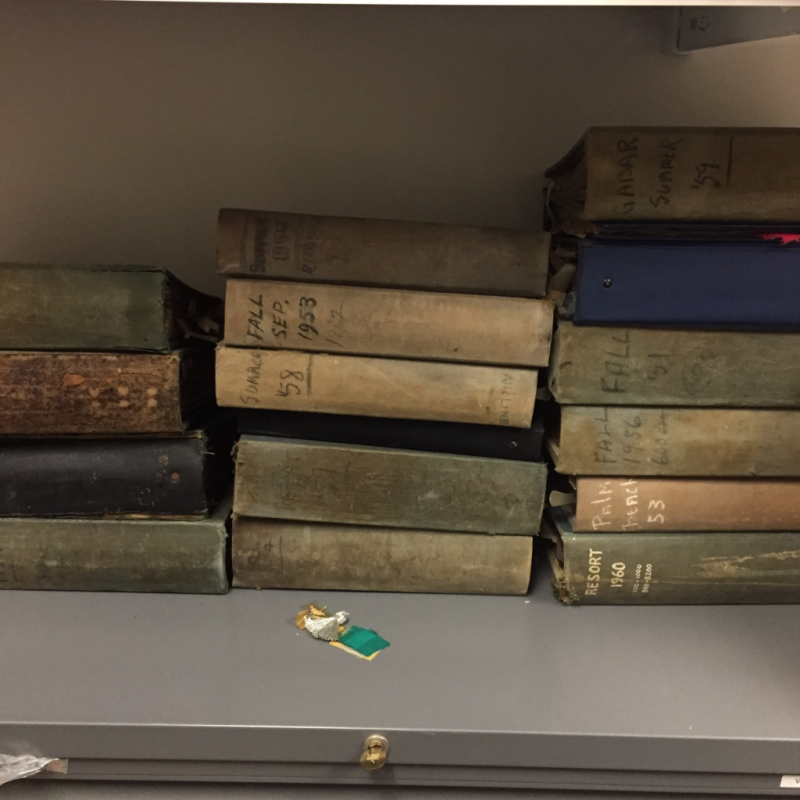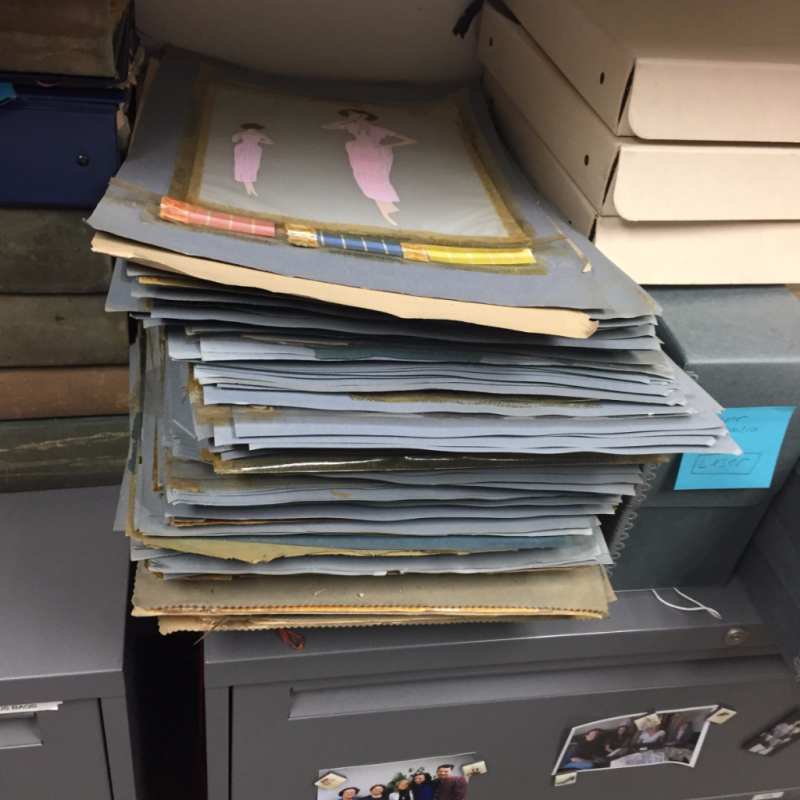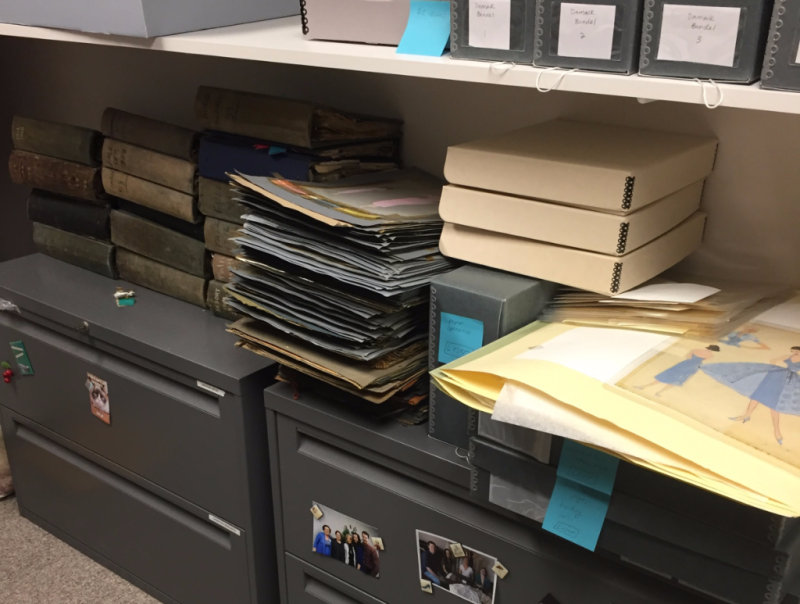Intern Report: The Tina Leser Archive
Our institution is proud to house a robust collection of specialty materials relating to fashion, such as sketches, magazines, books, patterns, fashion plates, photographs, ephemera, and even personal designer archives. However, archive collections take an enormous amount of time and dedication to organize in order to make them accessible to students, researchers, and the public. We've had fantastic Library and Information Studies interns help us facilitate these projects (in fact, we're seeking one more intern!), and today's blog post follows the initial steps to ordering a scattered and delicate archive.
Below, intern Marissa Maggs walks us through the process of organizing our prized Tina Leser Archive, a rare collection of scrapbooks, fabric swatches, and sketches by the famed mid-century American designer. Marissa is an MLIS graduation student at UCLA who has a special interest in fashion, history, and photography - and we are so grateful for her role in streamlining our Special Collections!
************************************************************************
After cataloging Special Collections photographs, the second project I undertook during my time at the FIDM Museum was the preliminary processing of the museum’s Tina Leser Archive. Tina Leser (1910-1986) was a mid-century American designer who was well known for her swimwear under the Gabar label and the global influence her designs exhibited.[1] Leser’s husband donated a collection of her materials to the FIDM Museum, consisting mainly of scrapbooks, which contain her sketches and corresponding fabric swatches. In addition to the scrapbooks, the collection also contains loose scrapbook pages, loose sketches, loose swatches and paper ephemera like newspaper articles.
The biggest issue presented by the Leser Archive is its inherent deterioration. Not only are the scrapbook pages brittle and prone to breaking when touched, Leser also adhered her sketches and swatches to the pages using household tape, which causes two problems: the tape loses its adhesive qualities over time, and it stains the paper or fabric underneath it. When the tape is no longer sticky, there is nothing holding these sketches to their respective pages other than gravity, so any movement risks the fabric swatches being separated from their corresponding sketch.
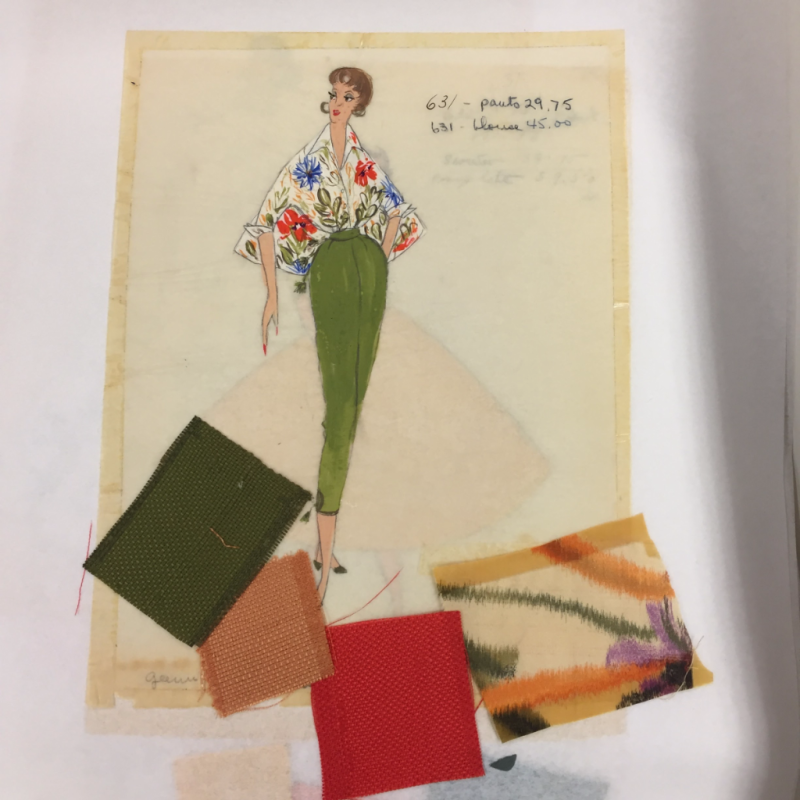 Sketch and swatches that no longer have any tape keeping them connected.
Sketch and swatches that no longer have any tape keeping them connected.
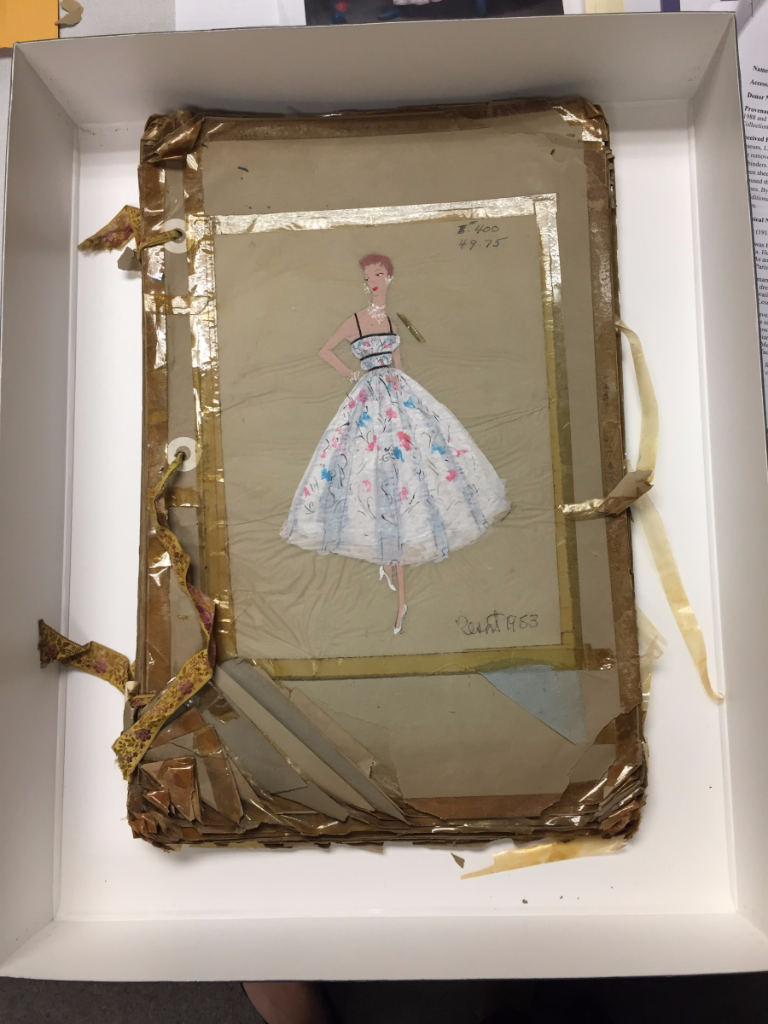 One of Leser’s scrapbooks, showing both the damaged, brittle scrapbook pages and the staining caused by adhesive tape.
One of Leser’s scrapbooks, showing both the damaged, brittle scrapbook pages and the staining caused by adhesive tape.
In its current state, the Leser collection is inaccessible to users. If an archival collection exists but cannot be fully accessed, what purpose is it serving? Due to its delicate condition, fully processing this archive will be time consuming, and I consider myself lucky to have been able to be a part of it.
The first thing I did was request a series of new archival grade boxes to store the materials in, which helped with organization and preventing further deterioration. By separating the collection into several different series (Scrapbooks, Loose scrapbook pages and sketches, and Paper ephemera) and labelling the boxes as such, the items were transformed into a more logically organized collection.
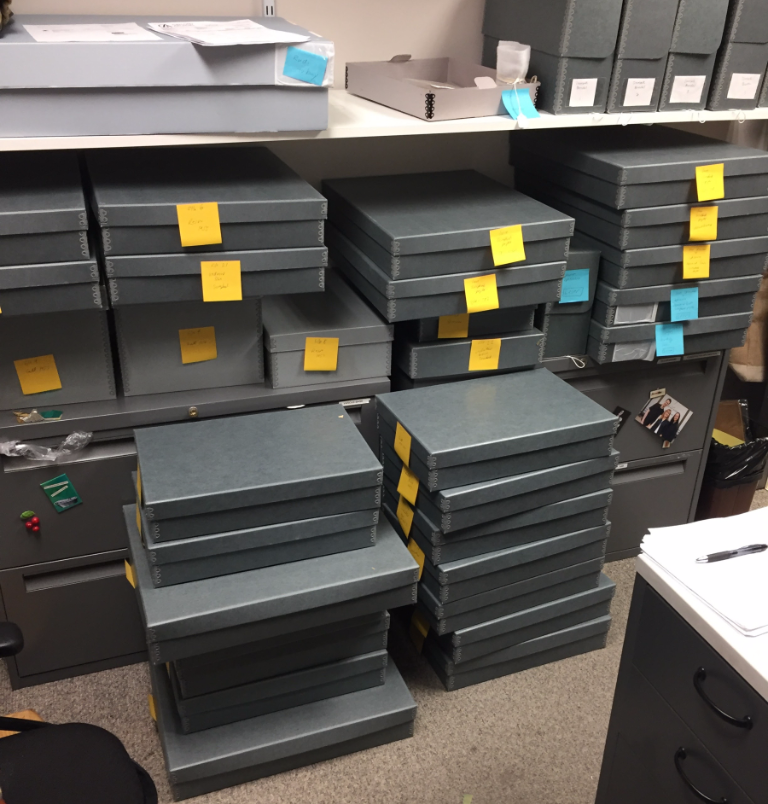 After: the archive boxed up and in the process of being labelled.
After: the archive boxed up and in the process of being labelled.
Next, I worked to create an order out of the loose scrapbook pages and sketches. At one time, these were housed in scrapbooks that were dated, but unfortunately the date information was lost when the scrapbook binder was removed. Leser numbered each of her sketches, which seems to correspond to her manufacturing. Without concrete date information, these numbers represented the best organizational scheme.
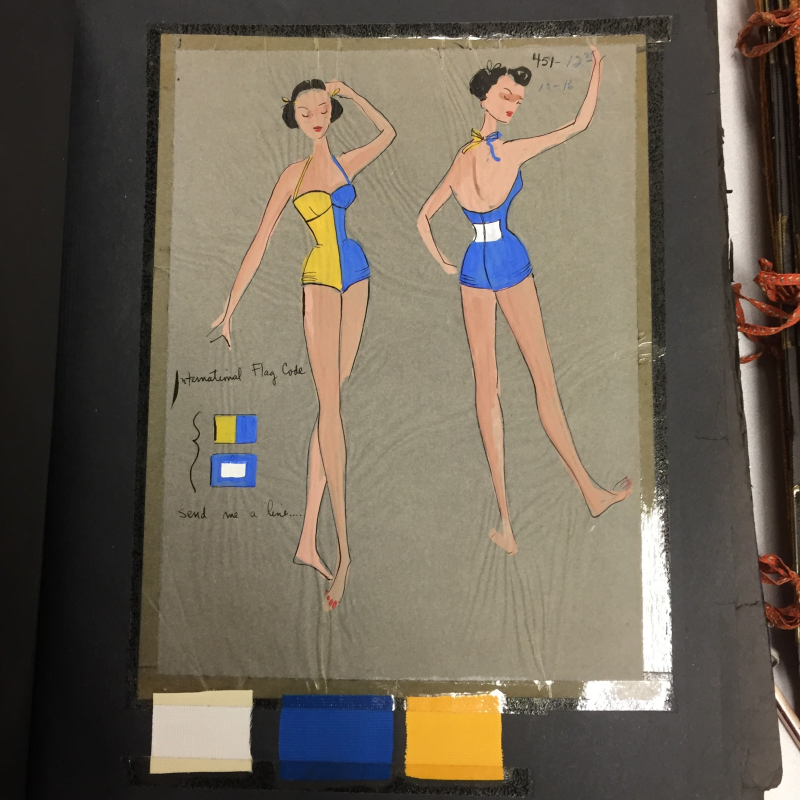 Sketch number is visible in the top right corner of the sketch.
Sketch number is visible in the top right corner of the sketch.
I also worked to rehouse some loose sketches, where the swatches were beginning to separate from the corresponding sketch. I moved these sketches into Mylar sleeves that are enclosed on three sides, and put the loose sketches into smaller Mylar sleeves that were slipped inside larger sleeves. These three-sided enclosures keep the sketch and swatches together, while still allowing users to access both the sketches and the swatches.
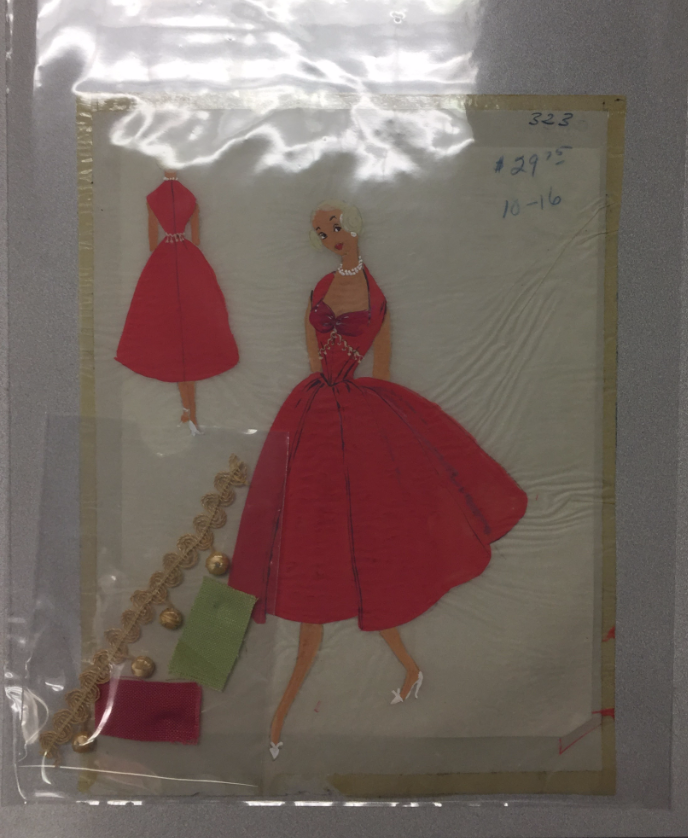 Rehoused sketch with corresponding swatches and ephemera
Rehoused sketch with corresponding swatches and ephemera
Finally, I created a preliminary finding aid to help users understand the organization of the collection. A finding aid helps communicate both the local organization and context of an archive to the user. As the Leser collection is further processed, this organization may change and the finding aid may be edited.
Although I started work on fully processing the Leser archive, there’s more to be done in order to assure use does not damage the materials. An archival collection must be accessible, but if full access is provided to this valuable collection in its current state, more damage will be sustained to the already fragile items. The FIDM Museum is planning further extensive paper conservation and digitization of this collection; it is well on its way to becoming a fully accessible resource for anyone interested in mid-century fashion design.
[1] April Calahan, Tina Leser: Designs for Escape, MA thesis, SUNY Fashion Institute of Technology, New York: Proquest/UMI (Publication No. EP72012).
